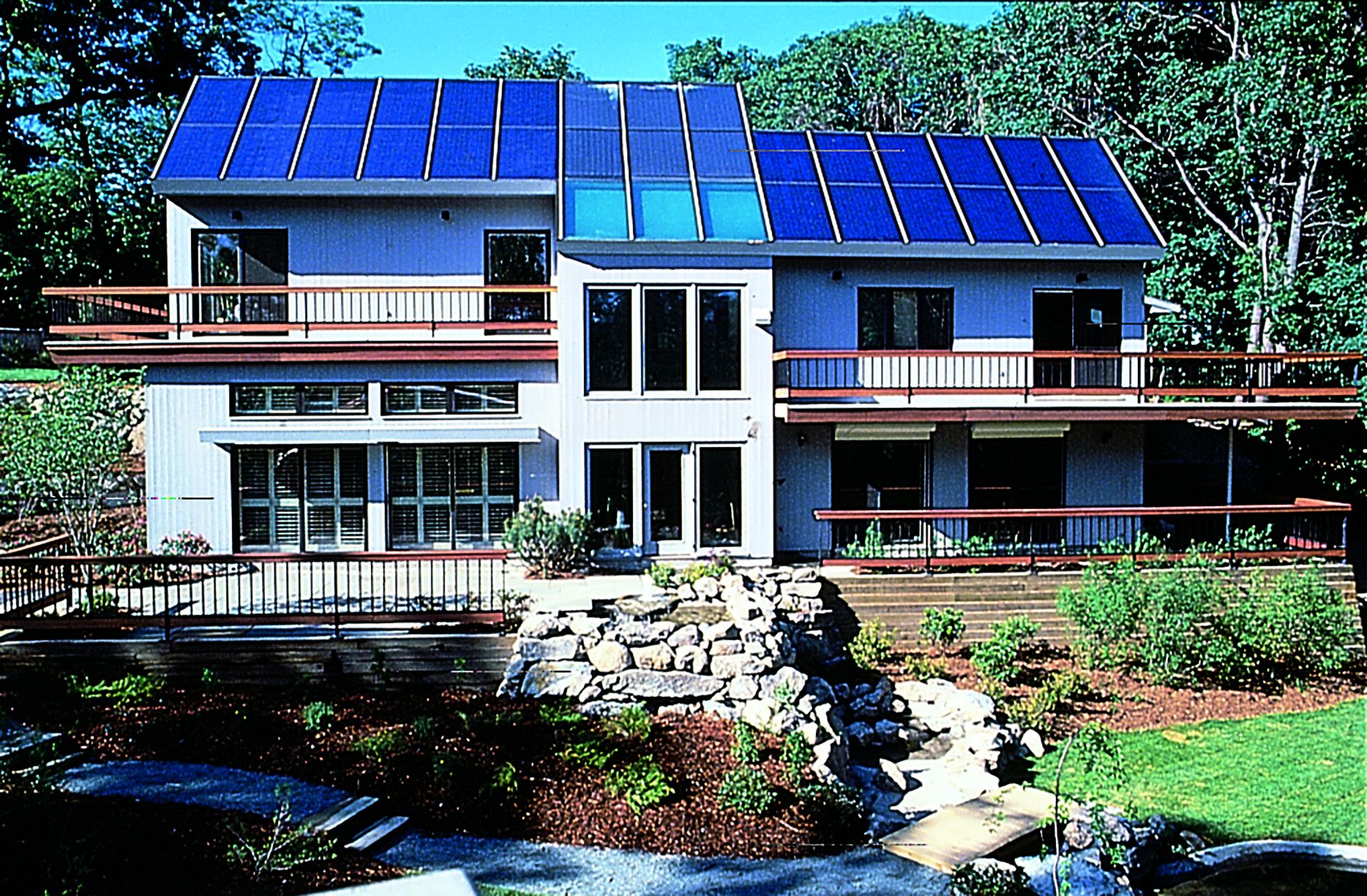By the early 1980s, oil costs had fallen from the 1970s’ dizzy heights, but Americans, burned by the energy crunch, remained cautious about heating their homes. Old houses were beginning to seem like money pits; spacious and charming but drafty and hard to heat. In addition people were working longer hours and had less time than ever for maintenance, let alone renovation. So This Old House embarked on a new sort of construction project: a brand new, energy-efficient, low-maintenance solar home that could heat itself.
The approximately 2,500-square-foot house plan featured state of the art passive and active solar energy techniques, a low maintenance interior and exterior and layers of extra insulation designed to conserve all the solar energy collected within the house. The location of the lot, on a steep slope in Brookline, Massachusetts, enabled the crew to build the house facing true south to give its solar collectors maximum efficiency. The house was then built right into the slope, allowing heat from the earth to leech through the well-insulated masonry walls and help keep the lower level- including two bedrooms, library, living and laundry rooms-warm. Upstairs at street level, a master suite, dining room, eat-in kitchen and an attached garage completed the house’s layout. This design focused the private living space at the back of the house replete with large, south-facing windows and decks overlooking an expansive backyard.
Solar energy can be a risky bet in New England, where winter temperatures can dip below 20 degrees Fahrenheit. But the house’s 24 photo voltaic modules, made up of solar cells that turn the sun’s energy into electricity, would produce up to 4,000 watts of power. In the summer, this meant that homeowners would be able to sell the excess to their local utility company. In the winter, as days grew short and temperatures low, they could rely on a ground-to-air thermal heat pump for backup heat. This system, a pair of water-filled polyethlyene pipes enclosed in a 400-foot well shaft, picks up the earth’s warmth and circulates back to the house where an air exchanger takes the warmth and distributes it through the house.
The solar panels, strong enough to withstand 100-mile-an-hour winds, were set at a 50-degree angle so that snow couldn’t build up on them. They were also less likely to carry a snow load because of their location on the sunny south side of the house. Louvers on the roof vented the attic and circulated air so that the photo voltaic cells would not overheat and malfunction. Sensors throughout the house monitored the temperature of each room and adjusted the heat accordingly. Domestic water heating modules were also placed on the roof to provide the house with free hot water eight to ten months out of the year.
The house’s energy efficient design also incorporated passive solar gain techniques to enhance and supplement the work of the roof panels. All of its windows and doors were fitted with thermal insulating glass that would reflect heat back into the rooms like mirror. The sheer size and number of the windows on the house’s south side insured that lots of heat and light penetrated into every room. Windows were kept small and sparse on the house’s darker north side, as they tend to capture less light and lose more heat than they gain in that location.
While the house’s active and passive solar energy capabilities were impressive, there was no point in collecting all that heat if the house could not retain it. In constructing the house, the crew used over 140 yards of concrete, creating solid interior and exterior masonry walls that would retain heat collected throughout the day and release it at night to keep the house warm. These sturdy walls were then double insulated, with six inches of fiberglass inside and two inches of rigid insulation outside. The attic alone was filled with 18 inches of fiberglass; even the garage door was insulated. In the end, the new house had an insulation rating three times that of a normal house. Carefully placed vapor barriers allowed the house to breathe while they prevented moisture from penetrating the insulation and causing it to rot. The finished product was a solid, efficient house that could run itself, relieve its future owners of their energy anxiety and leave them to enjoy the pleasures of their new home.

